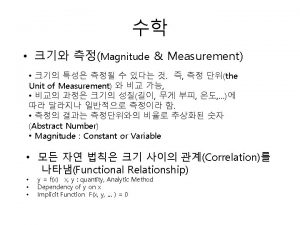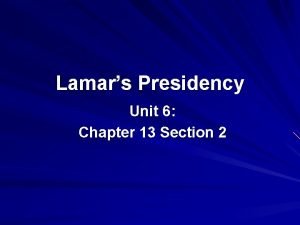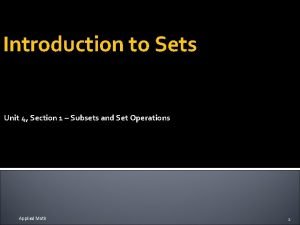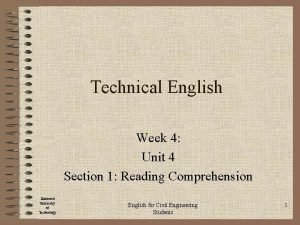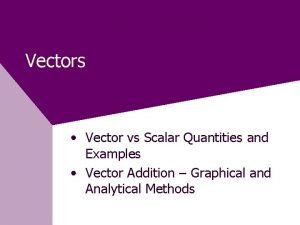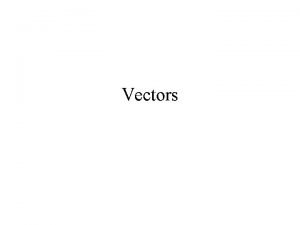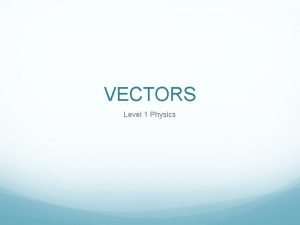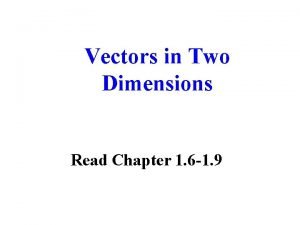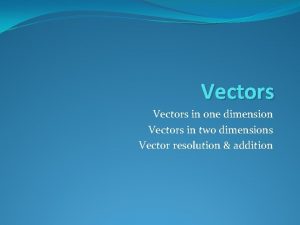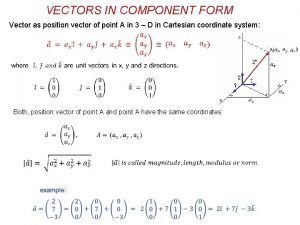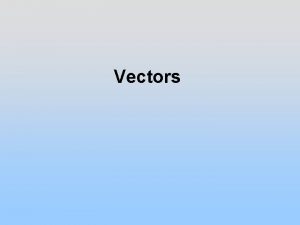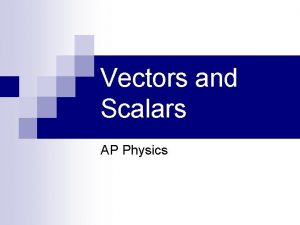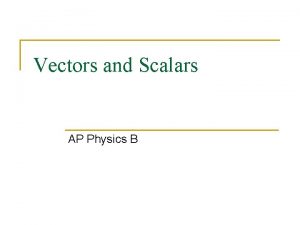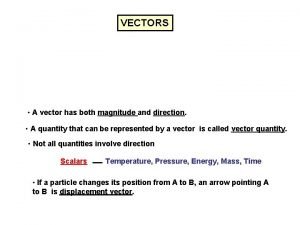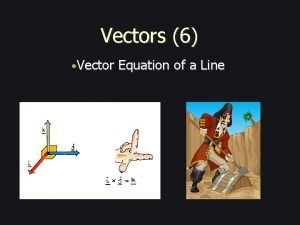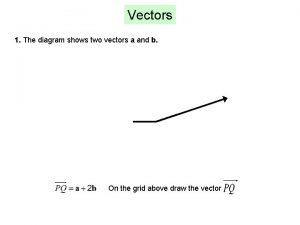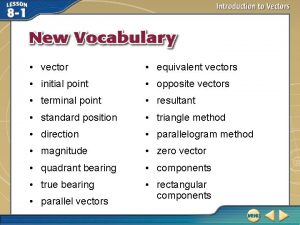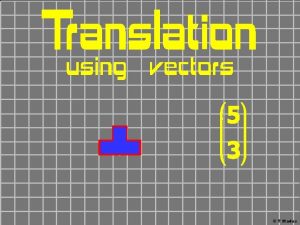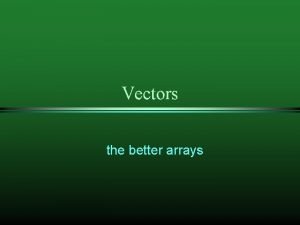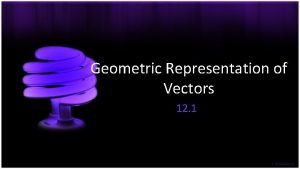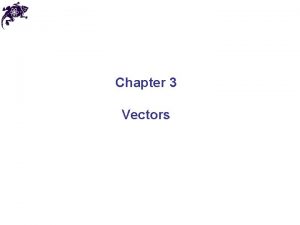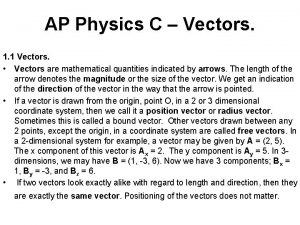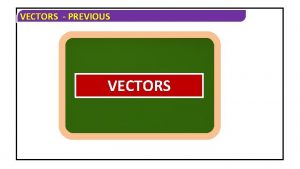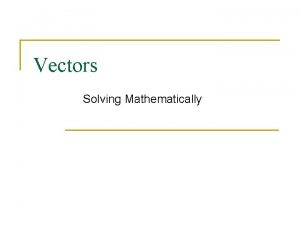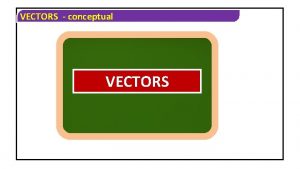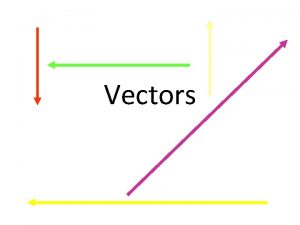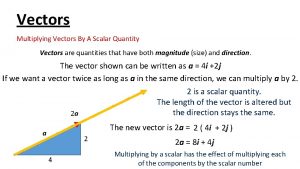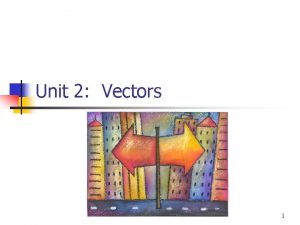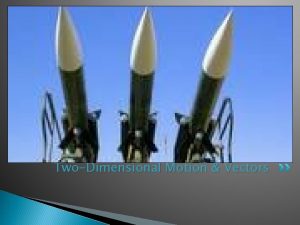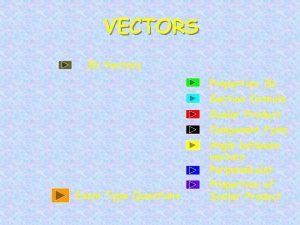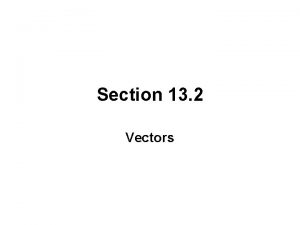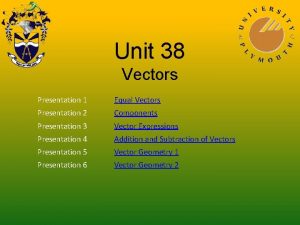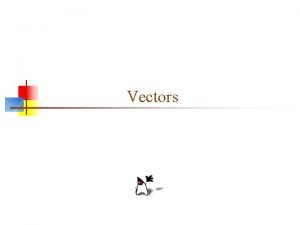Unit 2 Vectors 1 Section A Vectors vs









































- Slides: 41

Unit 2: Vectors 1

Section A: Vectors vs. Scalars n Corresponding Book Sections: n n 2. 1, 2. 2, 3. 1 PA Assessment Anchors: n S 11. C. 3 2

Which is more specific? n n Option A: The library is 0. 5 mile from here Option B: The library is 0. 5 mile to the northwest from here 3

Scalars vs. Vectors n Scalars n n Number Has Units Positive, Negative, Zero Ex: The library is 0. 5 mile from here n Vectors n Magnitude n n n Distance covered Direction Ex: The library is 0. 5 mile northwest from here 4

Why is this important? 5

Vectors n Have both a magnitude and direction n Represented by: n n Arrow on a graph Boldface print with an arrow a 6

Back to the example… n The library is 0. 5 mile to the northwest. n How do we actually get to the library? n Probably not possible to walk in a straight line… 7

8

Section B: Vector Components n Corresponding Book Sections: n n 3. 2 PA Assessment Anchors: n S 11. C. 3 9

Now explain how to get to the library… n 10

Vector Components n n If we have a “resultant” vector r We break a vector down into its components: n n x-direction: rx y-direction: ry These are called “scalar components of the vector r 11

In other words… ry r rx 12

How do you find those scalar components? n Trigonometric relationships n Sine Cosine Tangent n SOH – CAH – TOA n n 13

The basics… Ax = A cos θ Ay = A sin θ 14

To find the magnitude and direction given the components: 15

Intentionally Blank 16

Intentionally Blank 17

Intentionally Blank 18

Intentionally Blank 19

How do you determine the signs (+ or -) of vector components? 20

How do you determine the signs (+ or -) of vector components? 21

Summary of those four pictures… n To determine the sign of a vector component: n Look at the direction in which they point n n n If the component points in positive direction, it is positive If the component points in negative direction, it is negative THIS DOES NOT MEAN THE VECTOR IS POSITIVE OR NEGATIVE! 22

Practice Problem #1 n The vector A has a magnitude of 7. 25 m n Find its components for: n n θ θ = = 5. 00° 125° 245° 335° 23

Section C: Drawing Vectors n Corresponding Book Sections: n n 3. 3 PA Assessment Anchors: n S 11. C. 3 24

A picture… 25

You can move vectors! These are all the same vector – you just cannot change the length or direction. 26

Adding Vectors Graphically 27

The Vector Addition Rule… n To add the vectors A and B: n n Place the tail of B to the head of A. C = A + B, is the vector extending from the tail of A to the head of B. 28

But wait…it gets even better… C=A+B=B+A 29

This means that… C= A+B = C= B+A 30

Subtracting Vectors Graphically n n Suppose we’re looking for: D=A–B This really is equal to: D = A + (-B) 31

So, what does a negative vector look like… n The negative vector is simply the magnitude of the original vector pointing in the opposite direction 32

Back to the treasure hunt Find both the magnitude and direction of the resultant vector C. 33

Section D: Combining Vectors (Component Method) n Corresponding Book Sections: n n 3. 3 PA Assessment Anchors: n S 11. C. 3 34

Adding vectors using components… Ax = A cos θ n Remember that: n To find C (where C = A + B): n Cx = A x + B x n Cy = A y + B y Ay = A sin θ 35

Adding vectors using components (continued)… n And then… 36

Subtracting vectors using components… n To find D (where D = A - B): n Dx = A x - B x n Dy = A y - B y 37

Subtracting vectors using components (continued)… n And then… 38

Position vs. Displacement Vectors n Position Vector n n Indicated from the origin to the position in question Ex: Where you are from the origin n Displacement Vector n n n The change from the initial position to the final position Ex: Δr = rf – ri This means that… rf = Δr + ri 39

A displacement vector… 40

Practice Problem #2 n n Now draw the vectors and their components for those four angles. Determine if each component is positive or negative 41
 Unit 6 review questions
Unit 6 review questions Polar coordinates physics
Polar coordinates physics Kkxj
Kkxj Dimensioning section views
Dimensioning section views Removed
Removed Section views
Section views Chemical potential energy images
Chemical potential energy images Chapter 10 meiosis 1 and meiosis 2
Chapter 10 meiosis 1 and meiosis 2 Unit 6 section 2
Unit 6 section 2 What are subsets in math
What are subsets in math Numerical datum crossword puzzle clue
Numerical datum crossword puzzle clue Unit 4 section 1
Unit 4 section 1 Metode pembiayaan semi langsung
Metode pembiayaan semi langsung Unit 4 lesson 7 right triangles and trigonometry unit test
Unit 4 lesson 7 right triangles and trigonometry unit test English unit conversion
English unit conversion Algebra 2 unit 1 test answers
Algebra 2 unit 1 test answers Contoh unit cost rekam medis
Contoh unit cost rekam medis Unit process and unit operation
Unit process and unit operation What is unit operation and unit process
What is unit operation and unit process Setiap unit akuntansi dianggap sebagai unit yang mandiri
Setiap unit akuntansi dianggap sebagai unit yang mandiri Img srcx onerroralert1
Img srcx onerroralert1 Vector vs scalar examples
Vector vs scalar examples Representing vectors
Representing vectors Collinear vectors example
Collinear vectors example Vectors in 2 dimensions
Vectors in 2 dimensions Vectors
Vectors How to write vector in component form
How to write vector in component form Directed line segment
Directed line segment Decomposing vectors
Decomposing vectors Vectors and scalars in physics
Vectors and scalars in physics Vector notation
Vector notation Carl yaztremski
Carl yaztremski What are vectors and scalars
What are vectors and scalars The vector has both magnitude and
The vector has both magnitude and Parallel vectors
Parallel vectors The diagram shows trapezium oacb
The diagram shows trapezium oacb Equivalent vectors
Equivalent vectors Chickering 7 vectors
Chickering 7 vectors Sin 37°
Sin 37° Scalar and vector quantities
Scalar and vector quantities Sliding vector
Sliding vector Madas vectors
Madas vectors


